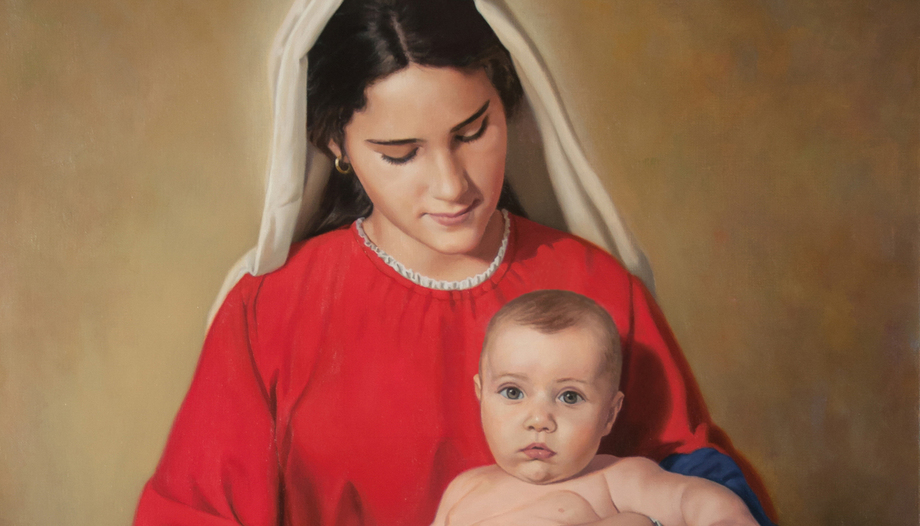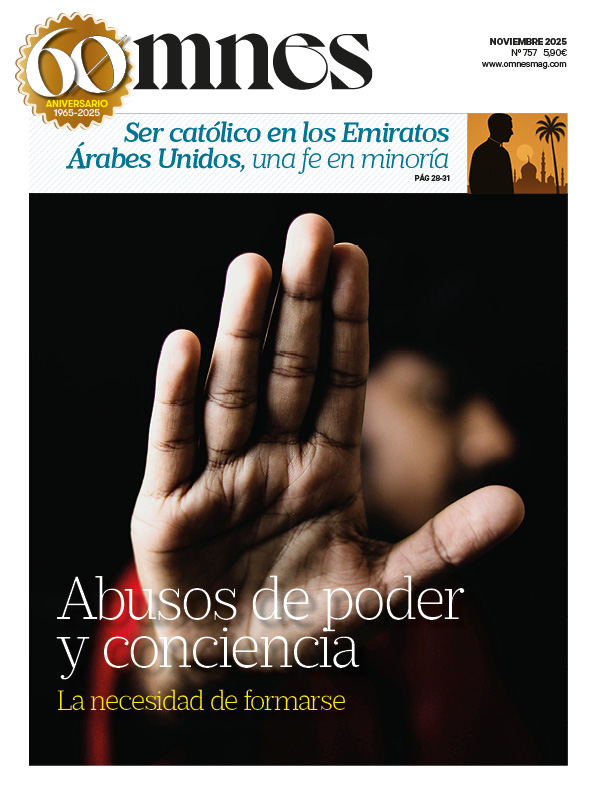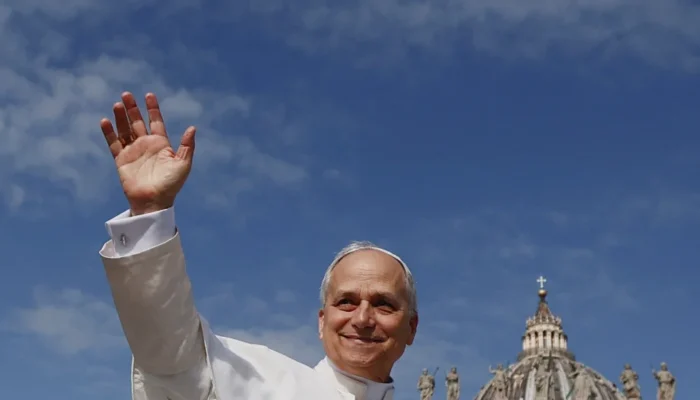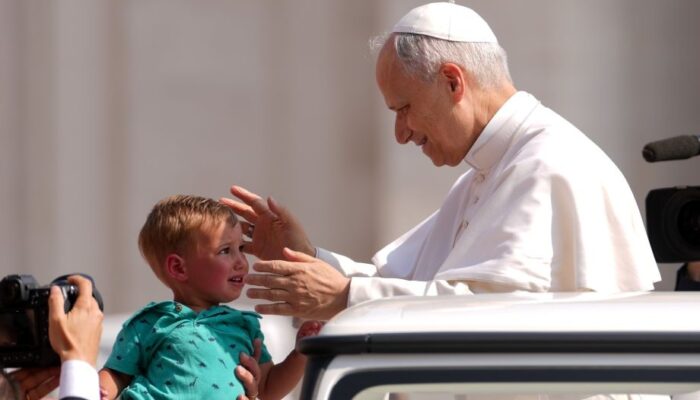Since Gonzalo de Berceo, the singer of the Gloriosa in the 13th century, Marian poetry has endured to the present day. Poets with deep Catholic roots have been able to keep alive this flame of love for the Mother of God, keeping it burning in Spanish literature throughout the centuries, and in the past it was mainly the clergy who expressed their devotion to the Virgin in verse, since culture was in their hands. However, over the years, poets and playwrights from the secular world have created beautiful compositions in which the figure of the Virgin Mary has been the main subject of devotion. Virgin Mary has occupied a central, unique place.
Without going too far back in time, in the 20th century names such as José María Pemán, Dámaso Alonso, Gerardo Diego, the first Rafael Alberti, Ernestina de Champourcín or Miguel Hernández stand out. After the Civil War In the 36, this tradition was continued by an extensive list of poets, among them Luis Rosales, Luis Felipe Vivanco, Leopoldo Panero, Rafael Montesinos, Luis López Anglada, Francisco Garfias, Pablo García Baena, María Elvira Lacaci or Alfonsa de la Torre. The list is extensive and remarkable.
However, although in recent decades Marian poetry continues to be latent, few poets -and even fewer poets- keep it among their preferences, even among those of Catholic conviction. What was once a flow, today has become a stream in which barely a handful of lyrical voices hoist a Marian-inspired poetry. I am not referring here to Christmas poetry, which continues to be written with a festive air and in which Mary appears as part of the "earthly trinity" together with Jesus and Joseph, but to that in which Our Lady stands out and shines with her own light.
A turning point
The year 1930 marks a turning point: there are far fewer quality secular poets born since then who sing of the Virgin Mary. However, if one delves deeper into the Marian literary fact, one discovers extremely interesting voices. Suffice it to mention María Victoria Atencia, Manuel Ballesteros, José Antonio Sáez, José Julio Cabanillas, the brothers Jesús and Daniel Cotta, the brothers Enrique and Jaime García-Máiquez, Carlos Pujol, Mario Míguez (the latter two are now deceased), Luis Alberto de Cuenca, Sonia Losada and Julio Martínez Mesanza; as well as authors who have published the occasional sporadic poem, such as Pablo Moreno, Gabriel Insausti, Julen Carreño, Beatriz Villacañas and Andrés Trapiello. The reasons for this decline are diverse and go beyond the limits of this article; broadly speaking, it can be said that they are the consequence of the secularization of culture which, logically, also reaches the lyric.
Ways of looking
Within the group of authors mentioned above, there are those who consider themselves minstrels of the Virgin, such is the case of Jesus Cotta, classically trained, who represents her by highlighting the variety of qualifiers and tasks that she performs, within the most genuine Christian monotheism: "...".O godmother of the cosmos, captain of the ship / that rescues harlots from the clutches of the pimp / with your limpid army of unborn children, / Notre Dame of the Copts, on the Crescent Moon, / that you show yourself in dreams to veiled girls / and the sun moves in Fatima, you weep blood in Akita, / and the possessed you free with a kiss on the forehead.".
Similarly, Luis Alberto de Cuenca, also classically trained, extols her using unusual and daring appellatives, some inspired by Greek polytheism: "...".White Goddess, Mary, Mother of the cosmic / order, sovereign of the abyss, / sacred and primeval womb, mandorla / from where everything is born, where everything / is reintegrated.". On the other hand, José Julio Cabanillas adopts a more serene and symbolic tone to address her: "Mistress of the vineyards, mistress of the mountains, / mistress of the fog, mistress of the roosters. (...), lady of the star, (...) Mistress of the winds".
For his part, Julio Martínez Mesanza celebrates it with a litany that underlines its purity and simplicity: "girl of the dazzling mountains; / girl of the transparent mountains; / girl of the impossible blues; / girl of the blues that are worth the most; / girl of tiny beginnings; / girl of humility rewarded; / heavy rain that washes away misery; / clean rain that washes away our souls.".
In contrast to these solemn and symbolic approaches, other authors address her from a more everyday and intimate perspective, bordering on confidentiality. This is how José Antonio Sáez puts it: "Good morning, Madam: Thank you for allowing me / to live another day the sun that illuminates us / and gives life to the beings that long for light". Or they associate it with the recitation of the Hail Mary, learned in childhood and repeated at home or at school. This is the case of Andrés Trapiello, who in his long and very beautiful poem Virgin of the Way relives the experience of this prayer that, although its rational side questions its practice, finds in it a refuge that offers protection and calm in the face of the passing of time and the mystery of death.
Other poets, on the other hand, evoke her from scenes in the Gospels or inspired by a painting of the Virgin Mary that moves them. In these poems, she herself often becomes a character reflecting on her acceptance of God's will. This is the case in the poem Annunziata by María Victoria Atencia: "Thy messenger came and spoke to me briefly; / Let me a stillness follow his errand. / Barefoot on the thresholds of dawn thou hast me:/ I will gather up my hair and arrange my room. /Your impatient tenderness peeks through the hillock. I know you in its light. Hurry up. I wait for you". Or in The visitby José Julio Cabanillas, in which the Virgin recalls the moment when the archangel Gabriel visited her: "So was my joy, my amazement and my fear / The visitor said things of great joy.".
What is certain is that, in all these lyrical expressions, Our Lady acquires a preponderant, irreplaceable role. Beyond the petitions and supplications that are present in many of these verses - "we beg you", "pray", "protect us", "intercede", "guide us"-, she is not only recognized as Virgo PotensShe is not only a powerful Virgin, but above all as a mother, clothed with all the prerogatives that her figure entails.
Mother of poets
This maternal reference to the Virgin Mary is usually associated with the spiritual awakening that refers to childhood memories. José Antonio Sáez expresses this clearly: "in you I see my mother"This sentiment is shared by other poets, such as Martínez Mesanza, who calls it "sweet mother"or Luis Alberto de Cuenca, who refers to it as "Mother of God". This perception of Mary often stems from the security conveyed especially by the recitation of the Hail Mary in childhood, as we have already seen, leaving a deep impression on hearts, even in those children who did not yet fully understand to whom they were addressing their prayers.
Although most of these poets do not have a precise theological vision of the role of the Virgin in the history of the Redemption of the human race -poems are not usually the right place to develop it-, the figure of Mary evokes an intense emotional background. This gives rise to verses full of hope, like those of Luis Alberto de Cuenca: "Having said this, and repeating the name of the Virgin / and of her glorious Son, I prepare to enter, / without fear or consolation, into the domains / of perpetual night."or those of Jesús Cotta: "where you are always the last thing I utter when I die".
As the Mexican poet Octavio Paz pointed out, the human being has "thirst for presence".The need for a figure who offers consolation, protection and guidance in the midst of life's uncertainties is deeply felt. This need is clearly manifested in the aforementioned authors, who feel an intense impulse towards Mary. For them, the Virgin is not so much a theological entity (for those who are), but a close and maternal companion who offers support, comfort and relief. This is continually confirmed in their verses, where a constant yearning for a return to a primal and absolute love is expressed.
Thus, Mary becomes the link between the human and the divine, a manifestation of that thirst for presence that seeks to transcend the ephemeral and reach the eternal.








